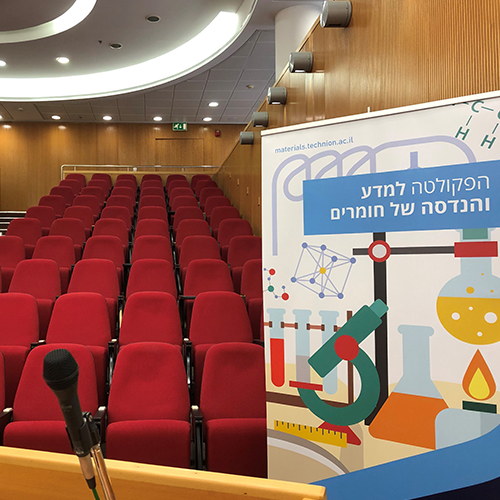
Ms. Iman Naamne - M.Sc. Candidate
25/08/2024
David Wang Auditorium, 3rd floor Dalia Meidan Bldg.
14:30
Grain growth is an important process which occurs together with densification during sintering of polycrystalline ceramics. The shape of grains can influence the properties of a material, and thus it is important to understand the reasons behind morphological changes. Alumina is one of the most studied ceramics, and thus it is often used as a model system for fundamental studies. Previous studies have clearly demonstrated that doping alumina with calcium (Ca) below the solubility limit results in accelerated and anisotropic grain growth, and as a result changes the crystal shape, where elongated plate-like alumina grains form. It is not clear if the elongated shape is due to the system approaching equilibrium, i.e. the equilibrium crystal shape (ECS) due to adsorbed Ca to some crystallographic surfaces, or if this is a kinetic shape where Ca results in anisotropic grain boundary mobility.
In this work, ECS of Ca-doped alumina was studied using internal cavities. Combined ion and electron microscopy techniques were used to introduce initial cavities, to determine that equilibrium had been reached, and to analyze the equilibrated cavities to determine the ECS of Ca-doped alumina. The rate of motion of the interface of oriented single crystals of sapphire into Ca-doped polycrystalline alumina was used to derive the anisotropic grain boundary mobility. The combined ECS and measured mobilities will be presented, demonstrating that Ca influences the kinetics of grain boundary mobility and not only the grain boundary energy.


